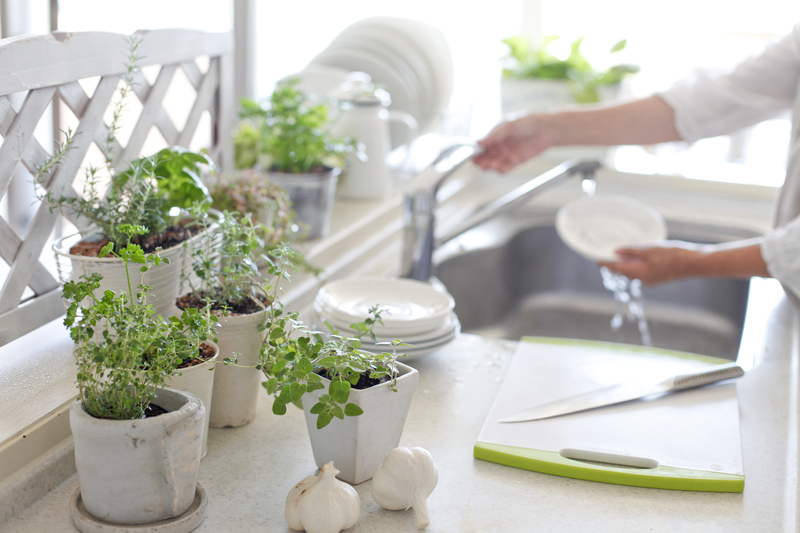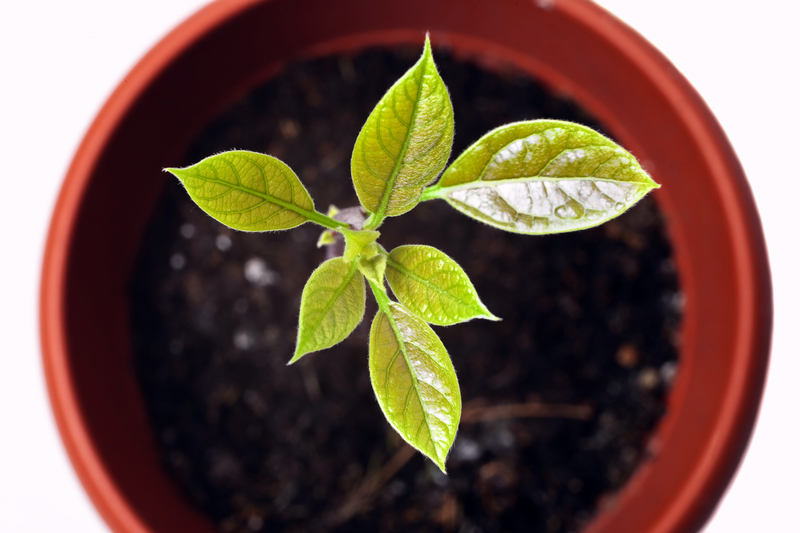Vertical Gardening for Small Spaces and Big Dreams
Posted on 09/06/2025
Vertical Gardening for Small Spaces and Big Dreams
Dreaming of a lush, productive garden but only have a tiny balcony, patio, or wall to spare? Enter the innovative world of vertical gardening! Whether you live in an urban apartment, a cozy cottage, or simply want to maximize your available space, vertical gardens offer creative solutions to grow more in less space. This comprehensive guide explores everything you need to know about vertical gardening for small spaces and big dreams--from benefits to best plants, DIY ideas, maintenance tips, and much more!
What is Vertical Gardening?
Vertical gardening is the practice of growing plants upward instead of outward. By utilizing walls, trellises, stacked containers, or hanging systems, you maximize square footage and transform unused or unsightly spaces into vibrant green oases. Vertical gardens can be as simple as repurposed shelves or as sophisticated as automated living walls.
Why Choose Vertical Gardening?
- Space-saving: Perfect for balconies, patios, or narrow yards.
- Increased yield: Grow more plants in less ground space.
- Improved aesthetics: Transform bare walls into living art.
- Better air quality: Plants help filter and purify the air.
- Pest and disease reduction: Elevating plants can minimize ground pests.
- Easier maintenance: Less bending and easier harvesting.

Innovative Vertical Gardening Systems
There are dozens of ways to build a vertical garden, each catering to different tastes, budgets, and available spaces. Some popular systems include:
- Wall-mounted pockets or planters: Fabric or plastic pockets that attach to walls, ideal for herbs and flowers.
- Living wall panels: Engineered modules with integrated irrigation, great for both indoor and outdoor vertical landscaping.
- Trellises and lattices: Classic support structures for climbing veggies, fruits, and vines.
- Hanging baskets and pots: Suspend from ceilings or railings to grow trailing and cascading plants.
- Stacked containers and tower gardens: Tiered planters or multi-level columns perfect for patios or roof terraces.
- Pallet gardens: Repurposed wooden pallets make budget-friendly plant racks for shallow-rooted crops.
Choosing the Right Vertical Garden Type for Your Space
Selecting the right system depends on your space, sunlight, and what you want to grow. Assess your location for:
- Sunlight availability: Most edibles need at least 6 hours of direct sun.
- Weight support: Walls and railings must safely hold the weight of soil, pots, and water.
- Water access: Consider proximity to a hose or irrigation system.
- Accessibility: Ensure you can reach all plants for watering, pruning, and harvesting.
Best Plants for Vertical Gardens
Not all plants are suited for vertical growing. Choose varieties that are compact, light, and have shallow root systems. Here are top picks for:
Herbs
- Basil
- Mint
- Chives
- Parsley
- Cilantro
- Thyme
- Oregano
Vegetables
- Lettuce and leafy greens
- Spinach
- Swiss chard
- Dwarf tomatoes or cherry tomatoes
- Peppers
- Radishes
- Peas and beans (climbing varieties)
- Cucumbers (bush or vining)
Fruits
- Strawberries
- Dwarf blueberries
- Compact melon or watermelon vines
- Passionfruit
- Miniature citrus trees
Flowers and Ornamentals
- Pansies
- Nasturtiums
- Petunias
- Sweet peas
- Ferns
- Succulents
How to Plan Your Vertical Garden
Careful planning ensures your vertical gardening dream flourishes. Here are the key steps:
1. Assess Your Space
- Measure height and width of the area intended for your vertical garden.
- Note the sunlight pattern throughout the day.
- Check the surface (brick, wood, metal) for mounting suitability.
- Determine if the space is sheltered or exposed to wind/rain.
2. Select Your Vertical Gardening System
- Choose a system that matches your gardening skills and maintenance capacity.
- Use lightweight growing mediums and containers for safety.
- If renting, opt for freestanding or non-permanent options.
3. Pick the Right Plants
- Match plant choice to light, heat, and wind exposure.
- Mix fast-growing with slow growers for staggered harvest.
- Consider aesthetics: combine foliage size and color for visual interest.
4. Arrange for Watering & Drainage
- Plan efficient irrigation--drip, hand-watering, or self-watering systems.
- Protect siding and floors from leakage with catch trays or guttering.
- Choose moisture-retentive yet well-draining potting mixes.
5. Installation
- Securely mount or set up your structure according to weight specifications.
- Stagger plants so taller varieties don't block light from others.
- Label plants and plan for access--avoid dense planting that blocks reach.
Creative and Budget-Friendly Vertical Garden Ideas
You don't need a big budget to turn your loft wall or fire escape into a productive green haven. Here are some inspiring and practical vertical gardening ideas:
Pallet Gardens
- Reclaim a wooden pallet, staple landscape fabric to the back and sides, fill with soil, and plant in the gaps.
- Ideal for shallow-rooted herbs, lettuces, pansies, and succulents.
Hanging Gutter Gardens
- Repurpose old rain gutters, mount them on a wall or balcony railing, and fill with lightweight potting mix.
- Space-efficient for strawberries, salad greens, and trailing flowers.
Over-the-Door Shoe Organizers
- Use canvas shoe organizers as pocket planters for balcony gardens.
- Hang on sunny fences or walls; fill each pocket with soil and a small herb or vegetable seedling.
Bookshelf or Ladder Gardens
- Repurpose an old bookshelf or stepladder for shelf-style planting.
- Arrange pots or trays at each level for a vertical "staircase" garden.
Hanging Bottle Gardens
- Cut and hang recycled plastic bottles as mini planters.
- Thread them in rows for a stunning, eco-friendly living wall.
DIY Trellis or Obelisk
- Build a custom trellis for peas, beans, or vining flowers using bamboo stakes or recycled branches.
Maintaining Your Vertical Garden
Ongoing care is key to a thriving vertical garden in small spaces:
- Watering: Vertical gardens may dry out faster. Check soil daily, especially in hot weather.
- Feeding: Apply diluted liquid fertilizer or slow-release granules during the growing season.
- Pruning and harvesting: Regularly pinch back herbs and vegetables to encourage bushiness.
- Pest control: Monitor leaves for signs of pests or disease. Use organic solutions whenever possible.
- Replanting: Rotate crops and refresh soil each season to maintain vigor and productivity.
Seasonal Tips for Vertical Gardens
- In winter, move portable vertical planters indoors or grow cold-hardy edibles.
- Mulch soil to retain moisture in summer and insulate roots during cold snaps.
- Install windbreaks or shade cloth for sensitive plants in exposed locations.
The Environmental Impact of Vertical Gardening
Vertical gardening isn't just about saving space--it also supports sustainable living:
- Reduces urban heat: Living walls help cool building exteriors.
- Improves biodiversity: Attracts pollinators such as bees and butterflies.
- Minimizes food miles: Grow your own herbs, veggies, and fruit right where you live.
- Recycles household items: Use upcycled materials to build unique vertical garden systems.
- Reduces air pollution: Plants naturally filter airborne toxins and dust.
Common Challenges & Solutions in Vertical Gardening
- Drying out: Use water-retentive soil and mulch to prevent rapid evaporation. Consider adding an automatic drip system.
- Weight issues: Choose lightweight soils and containers. If mounting on walls, ensure proper hardware and weight distribution.
- Poor sunlight: Use grow lights for indoor vertical gardens, or rotate outdoor planters to optimize sun exposure.
- Pests & diseases: Elevation reduces some common pests, but monitor plants regularly and practice organic pest management.
- Maintenance: Set reminders for watering, feeding, and pruning, especially during busy seasons.
Vertical Gardening Beyond Edibles: Living Wall Art
For those with big dreams of transforming their home into a sanctuary, vertical gardening can be more than just practical--it's pure artistry:
- Create mosaic patterns with colorful foliage.
- Mix annuals and perennials for year-round interest.
- Combine textures with ferns, succulents, and flowering plants.
- Add trailing vines for a waterfall effect.
Living walls can boost mood, reduce noise, and provide a unique backdrop for urban living.

FAQs: Vertical Gardening in Small Spaces
-
Can I do vertical gardening indoors?
Absolutely! Use wall-mounted panels, pocket planters, or ladder shelves in bright rooms. -
Is vertical gardening expensive?
It can be budget-friendly with DIY materials like pallets, bottles, or upcycled shelves. -
Do I need special soil for vertical gardens?
Yes, lightweight, moisture-retentive, all-purpose potting mixes are ideal. -
How much time does maintenance take?
Similar to traditional container gardening--a few minutes daily for watering and periodic feeding. -
What is the most productive edible plant for vertical gardening?
Herbs and leafy greens such as spinach or lettuce offer high yields with minimal space.
Conclusion: Dream Big, Grow Up!
Vertical gardening for small spaces and big dreams is not only possible--it's flourishing worldwide! With a little planning, creativity, and care, anyone can cultivate a lush, productive green oasis, no matter how limited their space. Whether you're aiming for a gourmet herb wall, a balcony salad factory, or a leafy vertical masterpiece, the possibilities are endless. Start your vertical gardening journey today and watch your dreams--and your garden--grow sky-high!
Unlock the full potential of your small space with vertical gardening and let your big gardening dreams soar!

